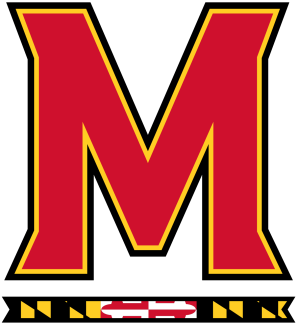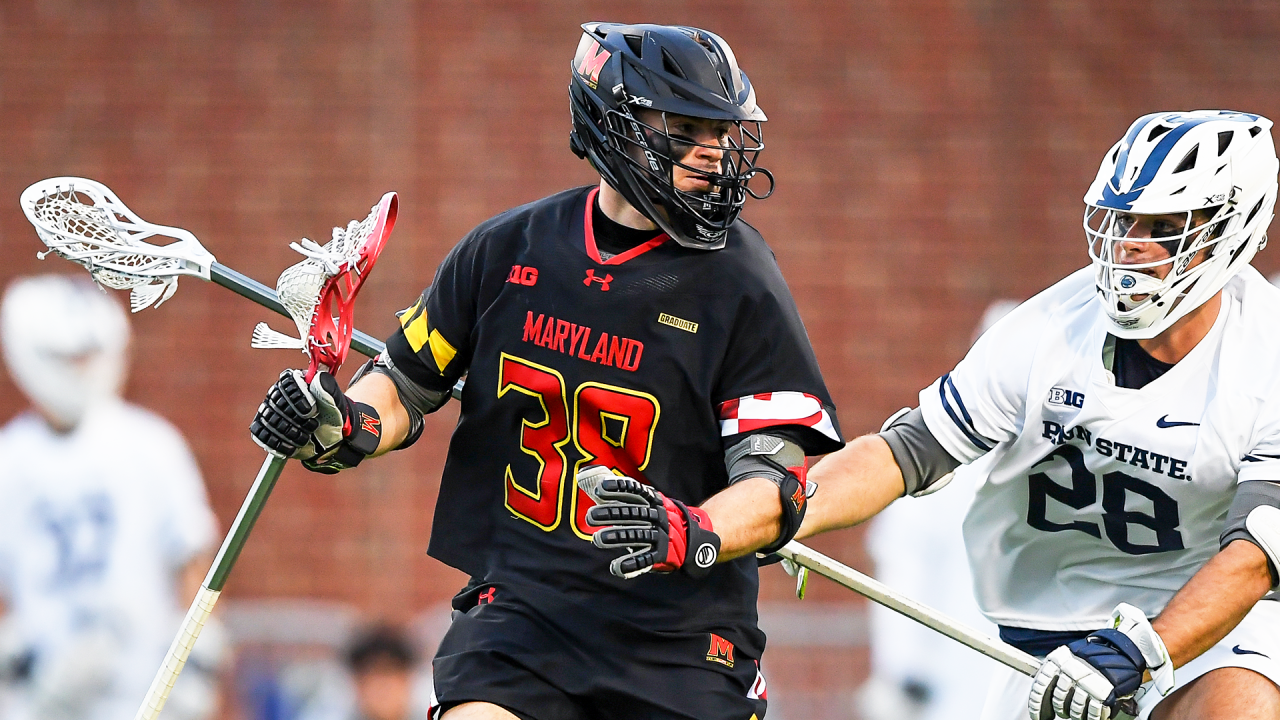BEFORE HE WAS A STARTER ON A FINAL FOUR TEAM, before he mimicked some of college lacrosse’s most skilled attackmen to help Maryland’s star defensemen prepare for games, Siracusa grew up in the rapidly developing lacrosse market around Atlanta.
The Alpharetta, Ga., native had 427 career points at Centennial High School, the sort of numbers that will generate at least some attention. Andy Pons, a local high school and club coach whose son Mac was a defenseman on Maryland’s 2017 national title team, tipped Tillman off about the slick offensive player.
It turns out it was not a difficult recruitment.
“My parents were very much, ‘If you get an offer from Maryland to play lacrosse, you’re going to go to Maryland to play lacrosse,’ because it’s such a big school with a big history,” Siracusa said.
Playing time, though, wasn’t easy to come by.
He redshirted the abbreviated 2020 season, then played in eight games in 2021 and a dozen more the following year. The stat line for those two seasons is unremarkable: one goal, one assist, 10 shots, two ground balls.
Of course, there were good reasons for the limited opportunities. Early in Siracusa’s career, Maryland’s offense featured a pair of eventual Tewaaraton winners, Jared Bernhardt and Logan Wisnauskas. Among the other notables on the roster: Anthony DeMaio, Jonathan Donville, Bubba Fairman, Keegan Khan and Kyle Long.
The Terps also went a combined 33-1 in 2021 and 2022, winning a national title in the latter year.
“It’s pretty hard not to stick with it when your team is winning and you have such great guys in front of you,” Siracusa said. “It would be a lot harder if I wasn’t on a great team to be sitting on the bench, but just winning all the time and going to those big games and looking up to guys like Jared and Logan Wisnauskas really helped.”
So too did the role Siracusa filled Monday through Friday each week. Name a star attackman Maryland has faced over the last few years, and chances are Siracusa was tasked at replicating him at some point.
Connor Shellenberger? Yup. Pat Kavanagh? Absolutely. Brennan O’Neill? He had that task going into the 2021 NCAA semifinals.
It meant studying tendencies each week, which was bound to improve his game. Defensemen like Brett Makar and Ajax Zappitello would send him clips to try to incorporate into his preparation. Then Siracusa would go to work in practice against eventual first team All-American selections.
“I felt a lot better going up against Brett and even Ajax every now and then because I felt like I had a little more of a sense of importance,” Siracusa said. “They were always coming to me to do the one-on-ones after practice. I kind of got a sense of confidence and a feeling that I’m giving them the best look.”
Everyone wants to believe they’re contributing, and Maryland’s coaches and players typically go out of their way in public settings to praise the work of teammates who toil away from the spotlight.
But as much as process is elevated in conversations about sports, results matter, too. And there’s no doubt Siracusa did his part to help Maryland get results early in his career.
“He’s one of those kids who could play the whole season and not have a single point and if we’re winning, he’s the happiest kid in the locker room, smiles all around,” said junior Eric Spanos, who played with Siracusa on the scout team in 2022, the second midfield last year and the first midfield this spring. “He’s just nothing but happiness, and he just wants to see everyone do well.”
Siracusa remembers feeling like his game was ready physically in practice in 2022, but it wasn’t translating when he got into games. With most of the stars of the Terps’ undefeated title team that year scattering after the season, there was playing time to be had.
He earned some — initially. But he had four turnovers in Maryland’s first three games, and he effectively fell out of the Terps’ midfield rotation until early April.
“I was definitely [thinking], ‘This is my final year of lacrosse, and I had a good run at it,’” Siracusa said. “A couple things worked out and I kept my head up and kept trying to play hard and really gained more confidence in myself because I went into it with, ‘I don’t care what happens anymore. I already got benched. I just want the team to do well and win.’”
He would re-emerge in Big Ten play, scoring goals at Ohio State and Rutgers. His first career multi-goal game came in a Big Ten semifinal defeat of Johns Hopkins. And he also contributed a goal in the first round of the NCAA tournament, when the Terps’ title defense was abruptly ended by Army.
From there, discussions about his future sped up. Teammates, certainly, hoped he would have the chance to build on his strong finish.
“I was always one guy that was on him,” Spanos said. “‘We’ve got unfinished business. You’ve got to come back. I know you want to. Just come back.’”



























































